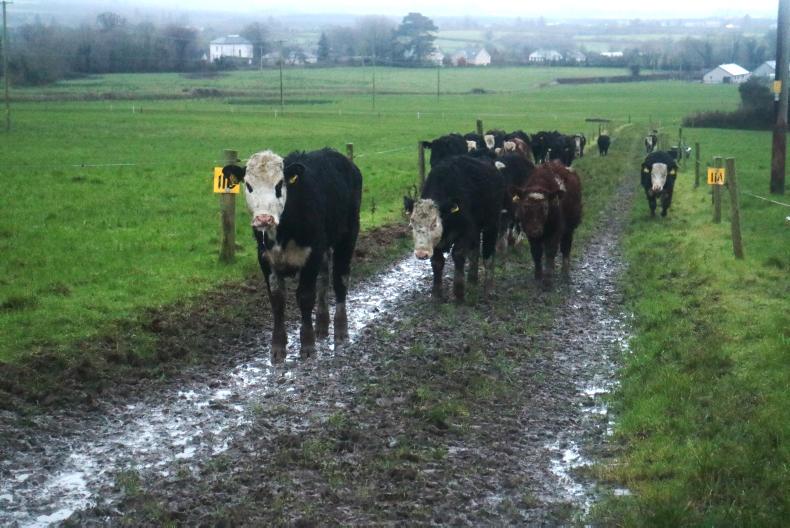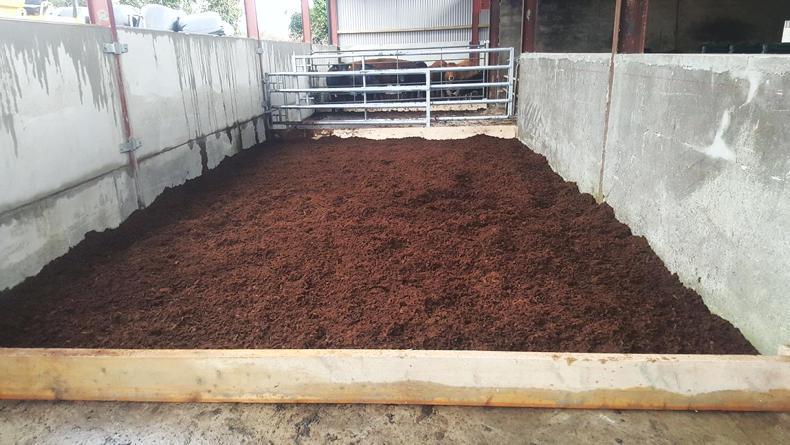James and his father John will calve 57 sucklers in spring 2018. They farm 41ha in Cordal, near Castleisland, Co Kerry.
On the agenda during last week’s visit to the Flahertys was silage reserves, dairy beef calves, and bedding.
There are four batches of silage on the farm at present, all of which are in the form of round bales. Two separate first cuts were done, with 73% and 62% dry matter digestibility (DMD) respectively and there are 150 bales of each.
Surplus grass from paddocks was baled, making another 40 bales at 66% DMD. The second cut came in at 59% DMD and there are 60 bales of this.
Silage deficit
In all, the pair have 478t of fresh silage in the yard. However, based on a worst-case-scenario of a four month housing period from 7 December to 7 April for all stock, a fodder budget shows up a deficit of 20t.
“Look, it’s not ideal obviously. I’ll push on the beef heifers a bit harder with meal now to try and save some silage. But in reality I’m confident of having animals out in February here if weather allows,” James commented.
“We closed up paddocks early on in the autumn and have good grass covers carrying over now. This is a former dairy farm, with every paddock being roadway-accessible, so we are well set up to graze early.”
Grazing continues
Indeed, 25 bought-in dairy calves were still grazing by day when I visited the farm last week.
After good growth in October, the Flahertys decided to go back in to heavy covers with the calves, all the while ensuring to keep on track from a closing cover point of view.

They were receiving one day allocations of grazing area and ground damage had been kept to a minimum up until the days prior to my visit, when wet weather caused a small degree of poaching.
Weight gain
The calves are predominantly Hereford-cross and had achieved a daily weight gain of 0.72kg from birth to 1 December, when average weight was 174kg.
Up to the end of last week, they were walking into the yard each evening for 1kg of concentrate and grass silage, going back to grass each morning. During the weekend, they came indoors permanently on to a peat bed.

With straw scarce in the region, the Flahertys have looked to peat as a bedding material.
“The cattle love it – there’s great warmth off it. It does get unsightly after a couple of weeks but you simply go in and turn it over. At current straw prices it makes more sense,” James said.